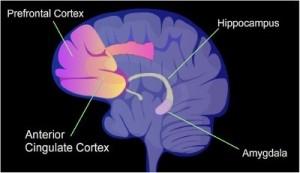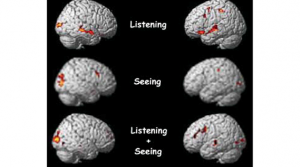
In today’s world, technology has been well integrated and incorporated into our lives. Most of day to day activities involve the use of technology, if not multiple technologies. With technology comes the culture of multitasking. Apps, text messaging,instant chat, and notifications that need immediate attention stretch how many things we can do at once. This clip from the TV Show, Modern Family, shows a mother checking the news and face-timing two family members at once.
Trying to complete multiple technological tasks at once is nothing new in today’s, society, especially for millennials who grew up with this lifestyle. Juggling a few online conversation while studying, driving, or completing attention demanding tasks seems to be the norm nowadays. In fact, in a study of Stanford students, 25% of the students used four different types of media at once when using media (Nass 2013). What’s more, millennials are dividing their attention up to 27 times per hour, up from 17 times per hour for previous generations (Lane 2012). Multitasking is in fashion. Being able to multitask is bragged about on resumes and people are under the illusion that they can juggle multiple tasks at once.But this modern lifestyle filled with constant electronic notifications and stimuli has been shown to be detrimental to our ability to retain information, perform, and focus. Technology has outpaced the brain’s processing abilities and multitasking has been shown to negatively impact efficiency and accuracy. Attention is a limited resource (Ward 20115) and the human brain is not adapted to the constant interference of the digital age.
In other words, multiasking is a misnomer. Neuroscientists have proven that people cannot actually complete multiple thought demanding tasks at once. Only very mundane and basic tasks such as walking can be done in unison with another, without overtaxing the brain. With thought demand tasks, people are actually switching their attention from one task to another. This constant switching, however, is inefficient and adds to the amount of time needed to complete tasks. Paying attention involves the prefrontal cortex, which controls higher level thinking, planning, and decision making. FMRI studies monitor blood flow to the brain, and therefore brain activity. The studies show that the switching from one action to another happens in the anterior part of the prefrontal cortex. The anterior part marks the incomplete task and allows the person to remember where to pick the task back up again. Ironically, the prefrontal cortex is the area of the brain that is most damaged by stress, and multitasking is considered a high stress activity. The overwhelmed feeling that comes from multitasking can also cause death of brain cells in the hippocampus which is essential for the formation of new memories (Healy 2004).

Multitasking is especially detrimental when it comes to learning. Students who simultaneously use electronics in the classroom have showed to do significantly worse than the students who are not distracted. In a study, half of a classroom of students taking an introduction to accounting course were allowed to text during a lecture while the other half was not. After the end of the lecture, quiz results showed that those who did not text did significantly better than the students who were texting (Ellis et al. 2010). Another study on students taking a general psychology course, had some students read a passage. Some students were instant messaging while they read while others were just focused on the reading. The students who were instant messaging took 22-59% longer to read the passage than those who were not distracted, even after the time spent messaging was subtracted from the overall time it took the students to complete the task (Bowman et al. 2010).
With two different tasks and goals, the right and the left sides of the prefrontal cortex can no longer work together. When test subjects were monitored with fMRI, and told that the had to complete two tasks, one with greater reward, nerve cell activity only increased in one half of the prefrontal cortex This finding suggests that if there are two competing goals the brain divides itself in half. Another fMRI study found that overall brain activity is reduced when the brain has to concentrate on two tasks (Baron 2010). Yet another study found that having to decide which task to focus on increases the amount of time it takes to complete the activities (Tombu et al. 2011).

When a third task is added, patients made up to three times as many mistakes as with two tasks and that juggling between more than two tasks becomes increasingly difficult because people only have two frontal lobes (Koechlin 2010).
Even though women have been shown to be better multitaskers, when involving technological media, men and women perform equally poorly (Nass 2013). And people who multitask the most often and believe they can multitask proficiently are actually the worst multitaskers. Multitasking does not improve with practice, instead it wears down the brain. People who chronically multitask showed activity increase in parts of the brain that are irrelevant. Chronic multitaskers lose the ability to have a laser like focus, even when they want to utilize it, because they are used to having their attention diverted into multiple areas (Ophir et al 2009)
To do two things at once is to do neither.
—Publilius Syrus, Roman slave, first century B.C.
It is estimated that only about 2.5 percent of the population can work on two tasks at once without negative effects on their accuracy and efficiency (Watson and Strayer 2010).So when it comes to multitasking, the odds are stacked against most of the population. Modern day studies have only solidified what has been hypothesized for thousands of years, that “to do two things at once is to do neither”.

Be First to Comment